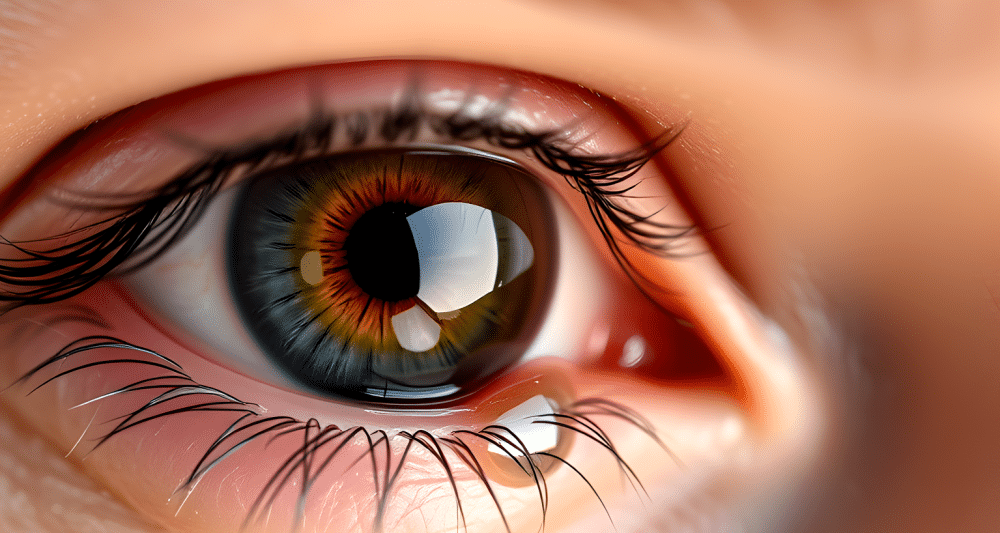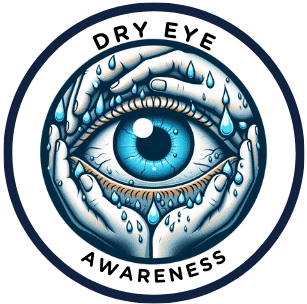
Dry eye syndrome is a condition that affects many people. It is often misunderstood, leading to numerous common misconceptions regarding its symptoms, causes, and treatments. My personal insights can help clear up these myths and offer better ways to manage the condition.
When you experience dry eye, you may notice irritation, redness, a feeling of grit in your eyes, or sometimes even excessive tearing. Although many assume these symptoms are always clear-cut, the reality is more varied. In this article, I will examine several common misconceptions about dry eye syndrome symptoms and give a boost to your understanding of the condition.
Understanding Dry Eye Syndrome and Its Symptoms

Dry eye syndrome occurs when your eyes either do not produce enough tears or when tears evaporate too quickly, resulting in discomfort that interferes with everyday activities. It isn’t simply about having dry eyes; rather, it involves an imbalance in the tear film that leads to a range of symptoms. Because each person’s experience is different, no single treatment works for everyone. Some individuals suffer from burning, stinging, or periodic dryness that can intensify in environments with wind or air conditioning.
It is essential to understand that there is no one-size-fits-all solution. You may need to try several treatment options before finding the one that works best for you. Small changes in your routine or environment might gradually improve your comfort level, so keeping an eye on subtle differences in your symptoms is very important.
Myth 1: All Dry Eye Symptoms Are the Same for Everyone
A common myth is that everyone with dry eye syndrome experiences identical symptoms. In my observation, symptoms can range from constant irritation to issues that appear only during prolonged screen time or exposure to dry air. The idea that dry eye always causes discomfort is not necessarily true, as some cases are subtle and easy to overlook.
Understanding these variations can pave the way for better treatment outcomes. It helps you communicate more effectively with your eye care provider so you can receive care that is tuned to your specific needs.
- Monitor changes in your eyes over time.
- Keep a diary of when symptoms appear and what you were doing at the time.
Myth 2: Dry Eye Is Only Caused by Environmental Factors

Many people assume that factors such as wind, dry environments, or air conditioning are solely responsible for dry eye symptoms. In my experience, while these elements can worsen discomfort, they are only part of the story. Hormonal fluctuations, certain medications, and underlying health issues also contribute to the condition.
This understanding is important because it guides you toward an all-in-one treatment plan that addresses more than just the visible symptoms. In many cases, solely targeting environmental triggers leaves the underlying imbalance unresolved.
- Assess your daily surroundings for potential allergens or pollutants.
- Review your medication list with your doctor.
Myth 3: Dry Eye Is a Minor Issue and Does Not Affect Daily Life

Some people dismiss dry eye syndrome as a minor irritation that comes and goes. However, I have observed that for many, the symptoms can seriously disrupt daily tasks such as reading, driving, or working on a computer. Taking the condition lightly might delay seeking proper care, which can eventually lead to more complications.
Recognizing the impact early on is crucial. Noticing even a small inconvenience in your daily routine can be the first sign that you need to adjust your treatment or lifestyle, helping to avoid serious issues later.
- Note any limitations in performing routine activities.
- Discuss emerging patterns with a professional.
Myth 4: All Eye Discomfort Is Due to Dry Eye Syndrome
There is a common belief that any form of eye discomfort must be due to dry eye syndrome. I have found that eye pain or irritation might also result from allergies, infections, or minor injuries. Relying on self-diagnosis can lead to treatments that are not effective and may even worsen your condition.
A proper diagnosis is essential. An eye examination conducted by an expert can rule out other causes and confirm whether dry eye syndrome is truly at the root of your discomfort.
- Schedule a visit with an eye specialist.
- Clearly describe your symptoms and their frequency.
Myth 5: Over-the-Counter Eye Drops Are a Cure-All Solution
It is common to think that lubricating eye drops available over the counter can completely solve dry eye syndrome. From my perspective, although these drops offer temporary relief, they do not address the underlying causes of the condition. Many patients need a treatment plan that might include prescription medications, lifestyle adjustments, or even advanced therapies.
This serves as a reminder that quick fixes rarely provide a permanent solution for long-term conditions. Relying solely on over-the-counter remedies might delay proper treatment and worsen your situation over time.
- Review your treatment plan if symptoms persist.
- Consider supplementary strategies to support overall eye health.
Myth 6: Dry Eye Syndrome Has No Long-Term Consequences
Another common misconception is that dry eye syndrome is merely a short-term nuisance. I have seen cases where untreated or poorly managed dry eye leads to more serious eye issues over time, including micro-abrasions and increased risk of infections or inflammation.
Early intervention is really important. Neglecting persistent dryness might compromise the surface of your eye, so maintaining a proactive approach with regular check-ups and consistent treatment is essential for long-term eye health.
- Keep regular appointments with your eye care professional.
- Follow the recommended treatment plan diligently.
Myth 7: Environmental Adjustments Alone Can Resolve Dry Eye Symptoms

Many experts recommend improving indoor humidity or taking breaks from screens to ease dry eye symptoms. While these changes are helpful, they are usually part of a larger strategy rather than a complete solution. Dry eye syndrome often requires a full treatment plan that addresses all contributing factors.
Supplementing environmental changes with proper medical advice gives you a stronger strategy for managing your symptoms effectively. This combined approach is much more likely to yield lasting relief.
- Use humidifiers and take regular breaks from screen use.
- Follow a structured plan that covers every aspect of your eye health.
Myth 8: Dry Eye Symptoms Are Solely a Sign of Aging
A common belief is that only older adults suffer from dry eye syndrome. In my experience, younger individuals can also be affected. Factors like genetics, prolonged screen time, and environmental stresses contribute to dry eye irrespective of age.
Assuming that dry eye is an issue exclusive to older adults can delay treatment for those who need it. Age should not be the only marker for risk; lifestyle factors and daily habits play a very important role too.
- Be alert to any changes in your vision, no matter your age.
- Consult a specialist if you begin to notice symptoms.
Myth 9: Lifestyle Changes Do Not Affect Dry Eye Syndrome

Some people believe that adjustments in lifestyle make little difference when it comes to managing dry eye. I have observed that decisions regarding diet, sleep, and screen time can have a noticeable impact on eye comfort. Simple changes, such as increasing water intake and ensuring adequate rest, can complement medical treatments very effectively.
Small, consistent improvements can add up over time, significantly reducing the frequency and severity of symptoms. It is a practical approach to integrate everyday habits into your overall treatment strategy.
- Drink plenty of water to aid natural lubrication.
- Include omega-3 rich foods in your diet.
Final Thoughts
Wrapping up, overcoming misconceptions about dry eye syndrome involves proper diagnosis, personalized treatment, and a clear understanding that the condition varies widely from one individual to another. Recognizing differences in symptoms, acknowledging multiple contributing factors, and exploring a range of treatment strategies can make a significant difference in managing chronic dryness.
Your journey to improved eye comfort begins with clarity about the myths and the real facts behind dry eye syndrome. Early and proactive management is really important to protect your long-term eye health and ensure daily comfort. Taking control now can lead to a brighter, more comfortable future, so use this information as a basis to ask questions and have a detailed discussion with your eye care provider.
Remember, achieving relief is not just about treating the symptoms—it is about understanding your condition fully and exploring all possible avenues for care. Stay informed, stay proactive, and step up your eye care routine to enjoy a clearer, more comfortable vision every day.
